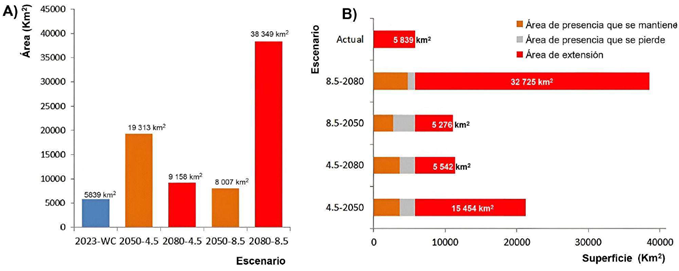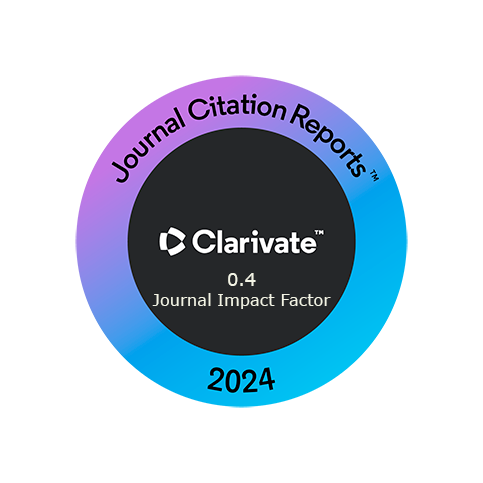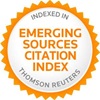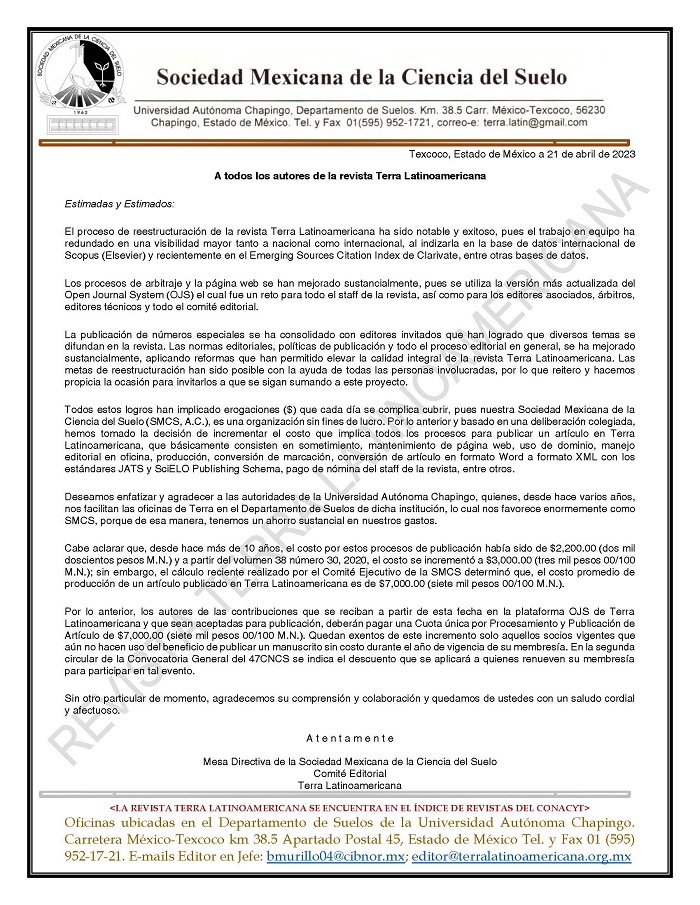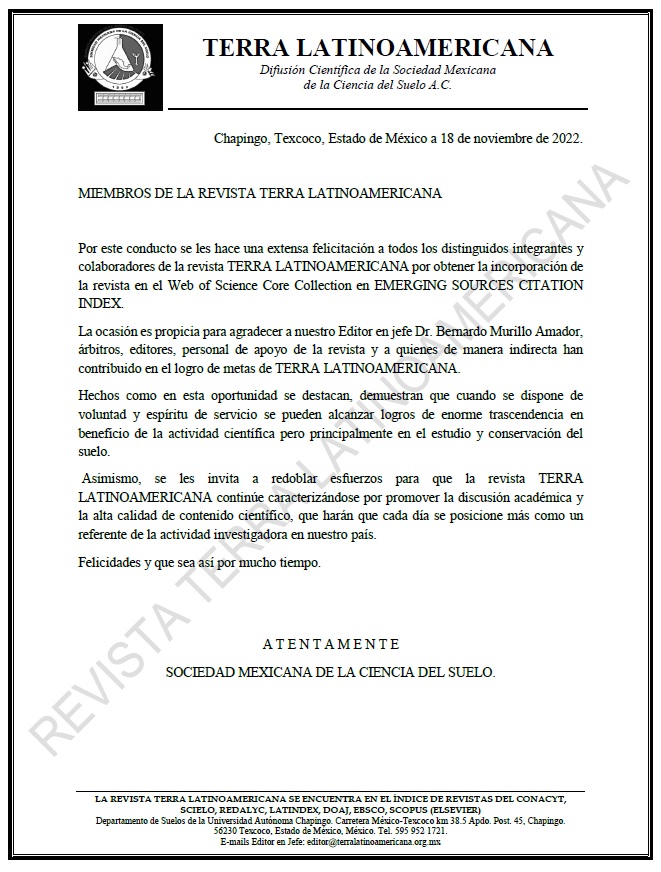Propagation of Ralstonia solanacearum and its Impact on Banana Crops in Ecuador
DOI:
https://doi.org/10.28940/terralatinoamericana.v43i.1978Keywords:
commercial species, MaxEnt, ecological niche models, Musa paradisiaca, plant pathogensAbstract
Global climate change can af fect agricultural production by facilitating the establishment of pests and pathogens. Banana (Musa paradisiaca) is one of the main agricultural products in Ecuador, but it is af fected by the moko disease caused by Ralstonia solanacearum. The objective of this research was to evaluate the potential ef fects of climate change on the ecological niche and potential distribution of this pathogen, and its implications for banana plantations in continental Ecuador. The ecological niche of the bacterium was described from 340 records of its presence globally and modeled with 62 records in Ecuador. Spatial variations in its potential geographic distribution under two climate change scenarios were evaluated and the banana plantations most susceptible to the spread of the pathogen were identified.
The ecological niche of the pathogen showed a low centrality in Ecuador compared to the overall niche of the species, indicating that the current climatic conditions in the country are not the most typical for the pathogen, although still within the range it can support. The potential geographic distribution of the current pathogen was 5839 km2, and in future climate scenarios the areas with favorable conditions for its distribution was more than doubled. The plantations most likely to be at risk are in central-northern Ecuador, in Los Ríos, Santo Domingo de los Tsáchilas, Manabí and Esmeraldas provinces. In the future, the extent of the distribution of this pathogen will depend on the establishment and compliance of strict disease management and control protocols.
Downloads
Publication Facts
Reviewer profiles N/A
Author statements
- Academic society
- Terra Latinoamericana
- Publisher
- Mexican Society of Soil Science, C.A.
